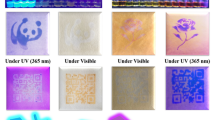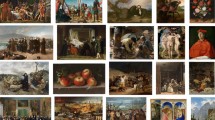Abstract
IN the ordinary process of giving a glazed surface to photographic paper prints by leaving them to dry face downwards upon clean glass, enough electricity is, I find, developed at the moment of separation between the dry glazed print and its glass support to produce a pretty bright illumination in the dark. “Solio” and other gelatino-chloride printing papers being very liable to adhere obstinately to a glass plate in this process, I have only constantly employed it with albumenised printing paper, and have then often noticed strong electrical attraction between the glass plate and the freshly separated paper. Not all glass plates, but apparently only very hard unhygroscopic ones, with a low percentage of soda in their composition, serve the purpose well; and even on these the print must not be freed from superfluous water by any pressure, but by swinging the plate until the water is sufficiently expelled to leave the glass and paper adhering firmly to each other. The paper can be then further freed from water by wiping it on the back, very lightly, with a soft cloth, and any intrusive air-bubbles seen through the glass can be driven out by stroking the back of the print very lightly with the finger. Left then to dry quite horizontally with the paper upwards, the latter will in hot, dry weather or in a very dry, warm room separate itself at last more or less completely from the glass; but in ordinarily damp atmosphere, and cold weather, remains, though sensibly quite dry, adhering to it. The slightest warmth of sunshine or of a fire or gas flame applied to the plate is then enough to make the paper crisp, and leave the glass. This it does with audible clicks as the adhesion breaks up here and there, showing that a state of pretty strong tension prevails in the thoroughly dry paper and the coat of albumen until these can break loose from their support.
This is a preview of subscription content, access via your institution
Access options
Subscribe to this journal
Receive 51 print issues and online access
$199.00 per year
only $3.90 per issue
Buy this article
- Purchase on Springer Link
- Instant access to full article PDF
Prices may be subject to local taxes which are calculated during checkout
Similar content being viewed by others
Author information
Authors and Affiliations
Rights and permissions
About this article
Cite this article
HERSCHEL, A. Electricities of Stripping and of Cleavage. Nature 63, 179–180 (1900). https://doi.org/10.1038/063179b0
Issue Date:
DOI: https://doi.org/10.1038/063179b0
Comments
By submitting a comment you agree to abide by our Terms and Community Guidelines. If you find something abusive or that does not comply with our terms or guidelines please flag it as inappropriate.



